Best pond plants: keep your pond healthy and looking beautiful
The best pond plants will ensure your pond water is clear and free of green algae, plus they will transform a plain water feature into a haven of tranquility


Introducing water to a garden brings lots of benefits, and if you choose the best pond plants, this can help to create a precious habitat that is both beautiful to look at and wildlife-friendly too.
Pond plants add so many positives. Choosing the right ones ensures that the water remains clear, odorless and free of green algae, with the huge advantage of creating visual interest all year round. With enough oxygenating plants, adding a pump and filter system to a pond is not necessary.
You should aim to have about two thirds of your garden pond ideas planted, according to Dan Reep, aquatics buyer at Squires garden centres. This could include a mixture of plants: some which thrive at the pond’s edges, species which prefer the shallows, as well as deeper water plants and ones which float on the surface.
Putting together your selection of the best plants for ponds is a bit like choosing a regular border design. It is always a good idea to mix textures, leaf sizes and foliage tones and shapes for variety, whilst including the all-important oxygenators in the water. Splashes of color can be introduced with flowers, either in a pastel palette, combining pale blue forget-me-nots and pale water lilies, for example, or by mixing hotter shades, such as scarlet monkey flowers and cheery yellow marsh marigolds.
'If you have a pond then you really should have pond plants,' explains Dan Reep. 'They help create and maintain a healthy balanced ecosystem, and they play a large role in keeping your pond in good condition.'
With a bit of knowledge, it is possible to create a magical pond in your garden, however large or small your water feature might be. Keeping reading for our edit of the best pond plants and how to care for them.
What are the different type of pond plants?
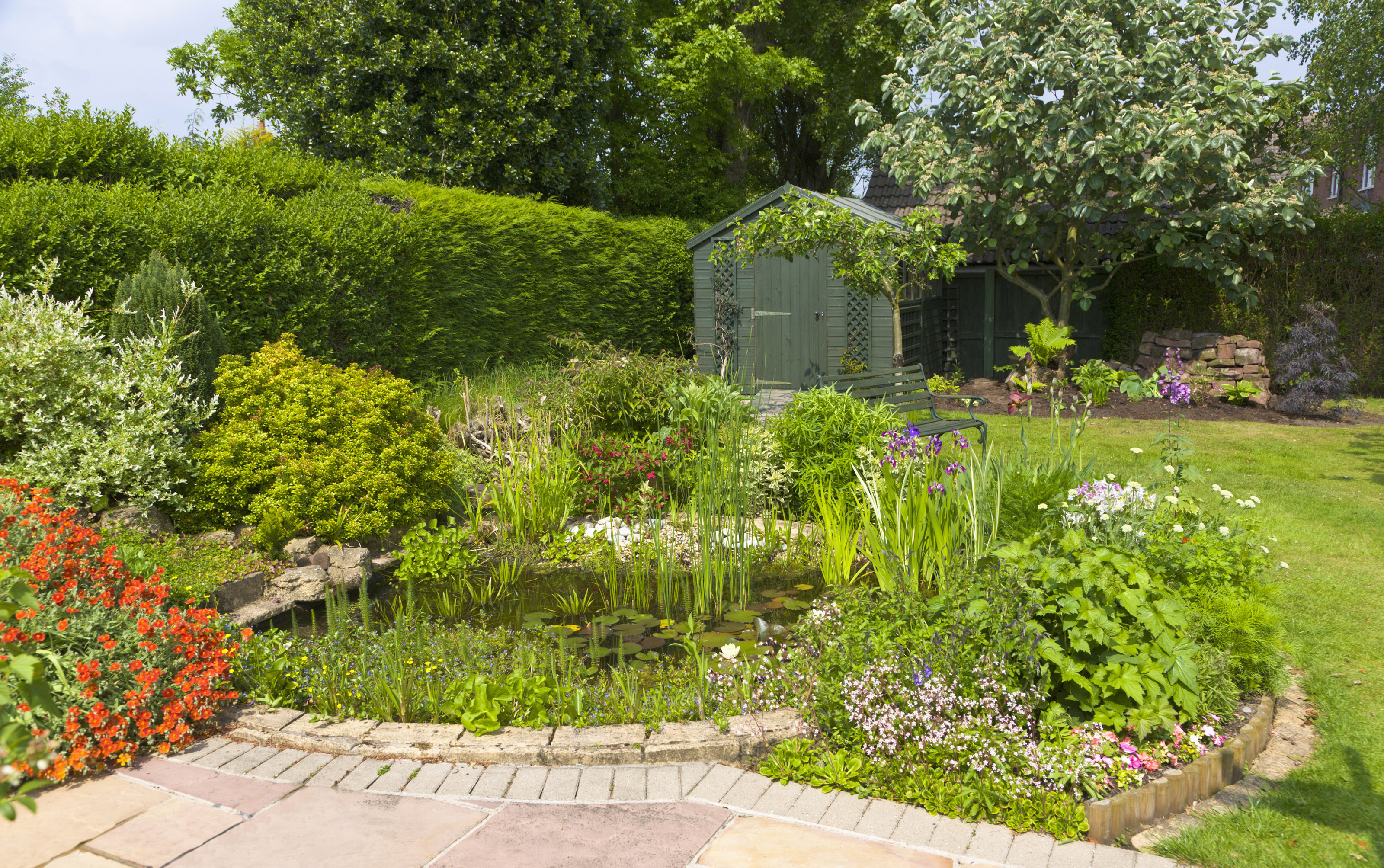
There are five main types of aquatic plants, so bear this in mind if you're learning how to build a garden pond and want to make sure you're choosing the best plants for your design. It's a good idea to have a mix of different varieties in your pond.
- Bog plants are moisture loving plants which sit at the perimeter of the pond. They are not strictly defined as aquatic plants, but they do like to have permanently wet roots, and they are valuable in helping to define the shape of a pond. They are usually planted at a depth of 0-15cm.
- Marginal plants grow in shallow water, rising up above it. Their roots need to be completely underwater. The planting depth is 0-15cm.
- Deep marginal plants will emerge and flower above the water. Their planting depth is 15-40cm.
- Deep water and oxygenating plants are crucial for a healthy pond. They might float on top of the water, stick out slightly, or be completely submerged. 'They are very valuable as they absorb nutrients from the water which can prevent nuisance algae from growing, keeping your water clean and clear,' explains Dan Reep of Squires. The planting depth is over 40cm.
- Floating plants sit on the surface of the pond. Their roots hang in the water. They are generally low maintenance and will provide shade for fish, and a handy place for pond wildlife to sit.
The best pond plants
1. Yellow flag iris (Iris pseudacorus)
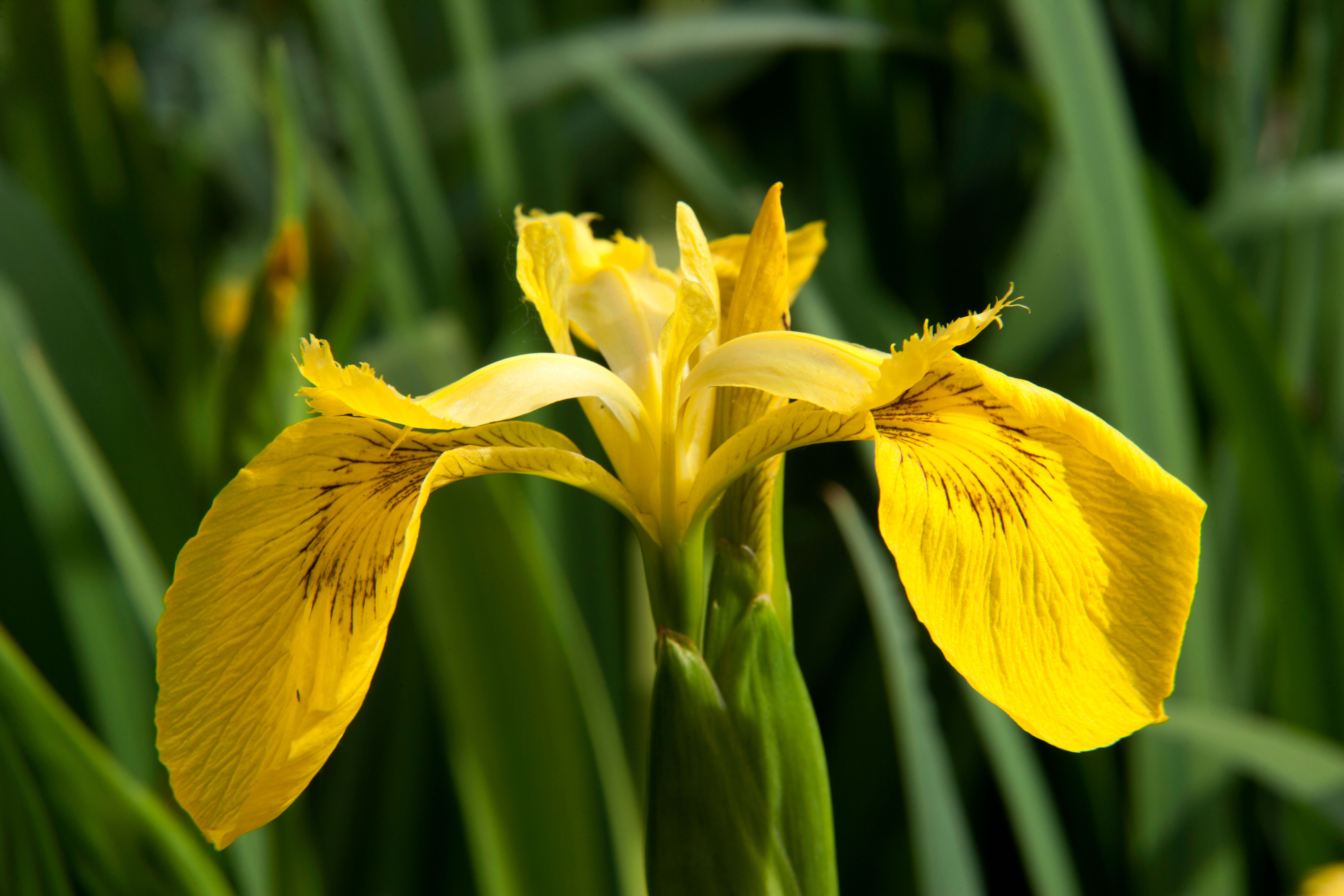
Yellow flag iris are marginal plants, best for larger ponds. They are easy to grow and will provide lots of buttery yellow flowers from late spring. Divide the rhizomes every two years, after the plant finishes flowering in June.
2. Water forget-me-not

Another easy-to-grow plant for pond margins. It has clusters of tiny blue flowers with a yellow eye, on low-growing foliage which will spread to create an informal edging effect, hiding ugly pond liners or softening hard lines.
Best grown in water no deeper than 5cm. Newts will lay their eggs individually in the leaves. Flowering time is from May to September.
3. Frogbit (Hydrocharis morsus-ranae)

Another great option on our list of the best pond plants, this is helpful for providing shade for pond-dwelling creatures.
It's an attractive floating plant with rounded leaves, and small white flowers with a yellow spot on each petal. They look a bit like small water lilies. It needs to be thinned regularly to prevent it from taking over the water.
4. Waterlily (Nymphaeaceae)
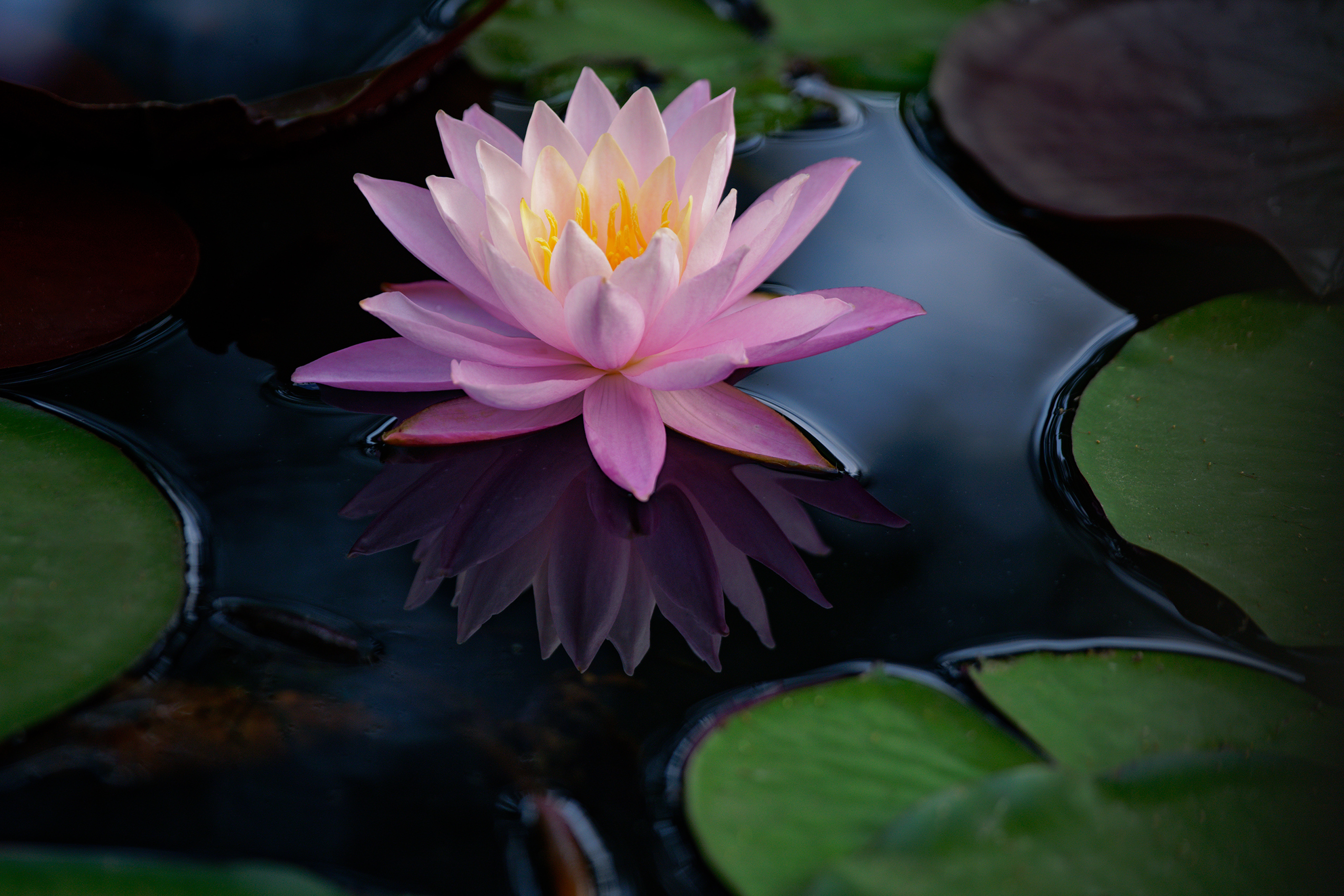
A classic for your best pond plants list, and surely one of the prettiest floating water plants. It's available in red, yellow, pink and white. According to Dan Reep of Squires: 'they need lots of sun and will thrive if fed with an aquatic plant food for ponds.'
He advises that waterlilies dislike having running or splashing water on their pads, so consider its placement if you're combining it with other water feature ideas such as a small fountain. Some varieties of waterlily may grow too large for smaller ponds, so check the dimensions carefully before choosing a variety.
5. Spiked Water Milfoil (Myriophyllum spicatum)

This is an oxygenating plant which can grow in deep water and remains submerged all the time. As well as contributing to healthy pond water, it provides a habitat for tadpoles and invertebrates.
It has red foliage and is a fast grower. It will thrive at depths from 30cm – 450cm and prefers full sun or part shade.
There's more ideas for transforming the shadowy spots in your garden in our shade garden ideas.
6. Marsh Marigold

Also known as King Cup, this is an attractive marginal plant with vivid buttercup-like yellow flowers on upright stems which are attractive to bees, hoverflies and butterflies, so a great choice if you're looking to include bee friendly plants in your scheme.
It is happy in wet mud or up to 10cm of water over the plant crown. Site it in a sunny spot. It’s recommended that marsh marigolds are planted in a basket to contain their growth (see below).
7. Water crowfoot
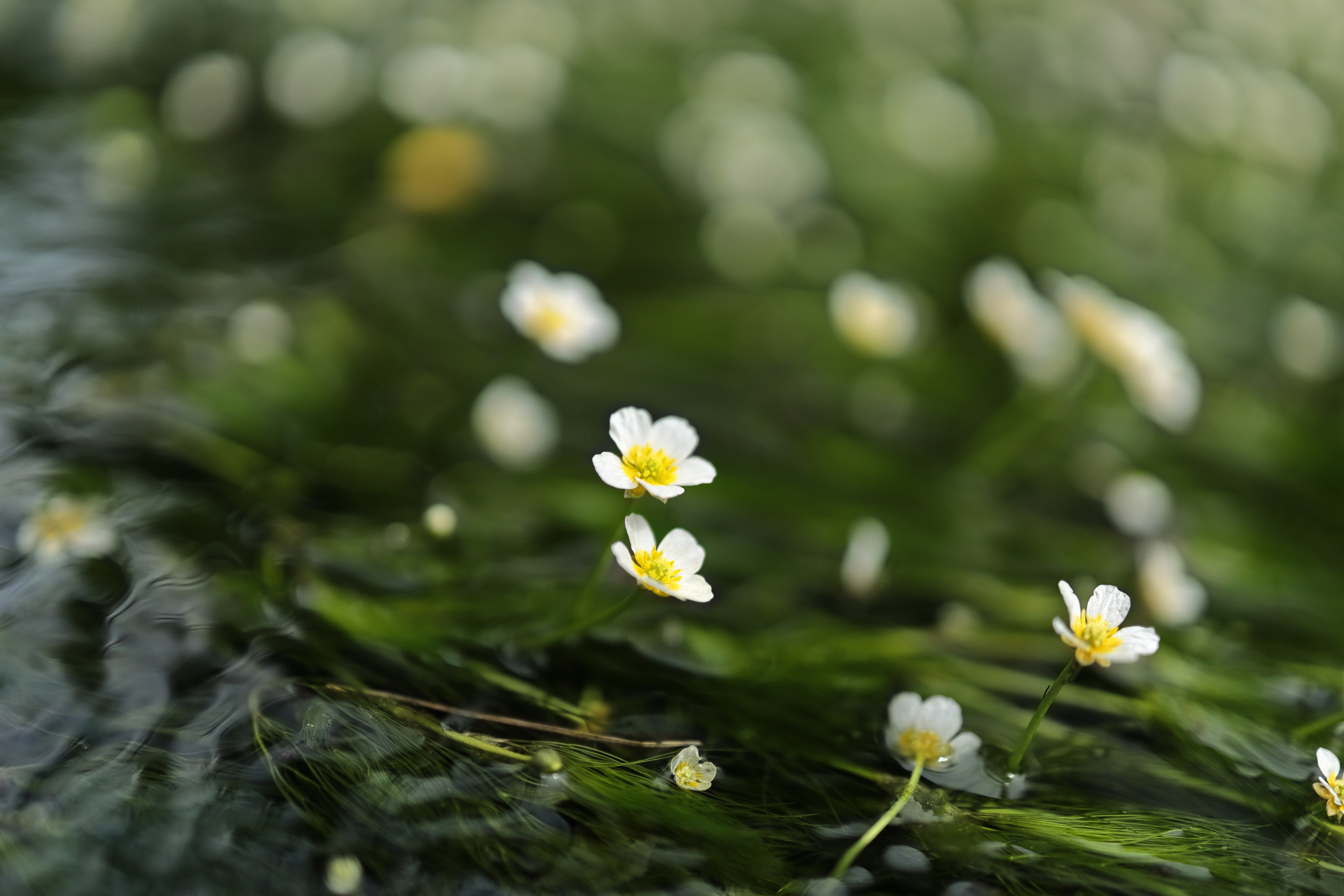
A very effective oxygenator with leaves that sit under and above the water. Useful and beautiful, in April to June it has masses of pretty, small white and yellow flowers on mats of leaves, and feathery fronds which grow under the water. Plant from 15-60cm deep.
8. Golden Club
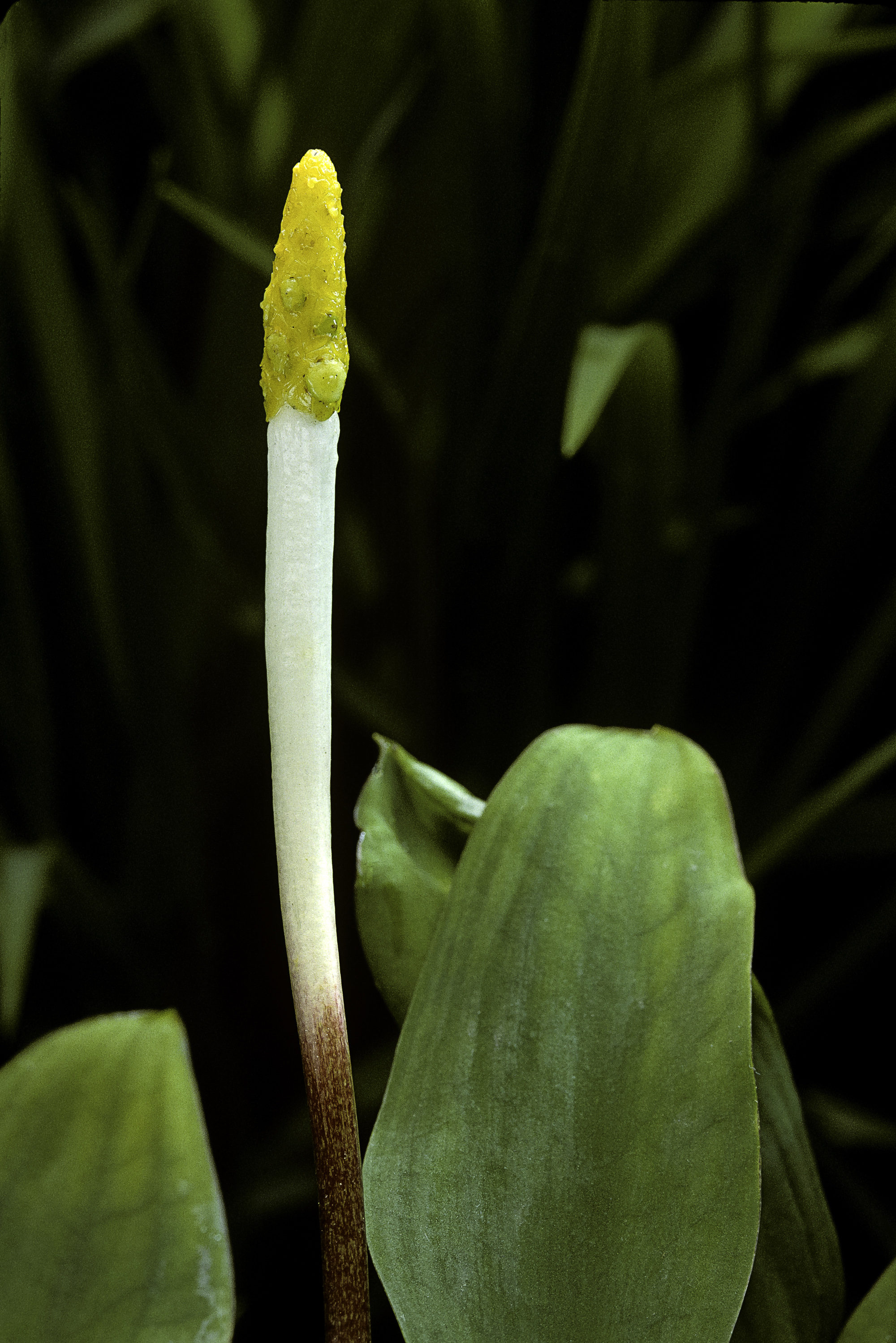
An interesting option to add to the best pond plants list, this is a sculptural deep-water perennial plant. It has blue/green floating leaves and long, upright white pencil shaped stalks with a yellow tip in the spring.
Plant in a large pond basket to contain the growth. Cut off the flowers after they go over. These plants are valuable in helping to keep water clear. Plant up to a depth of 40cm in full sun.
9. Amphibious bistort
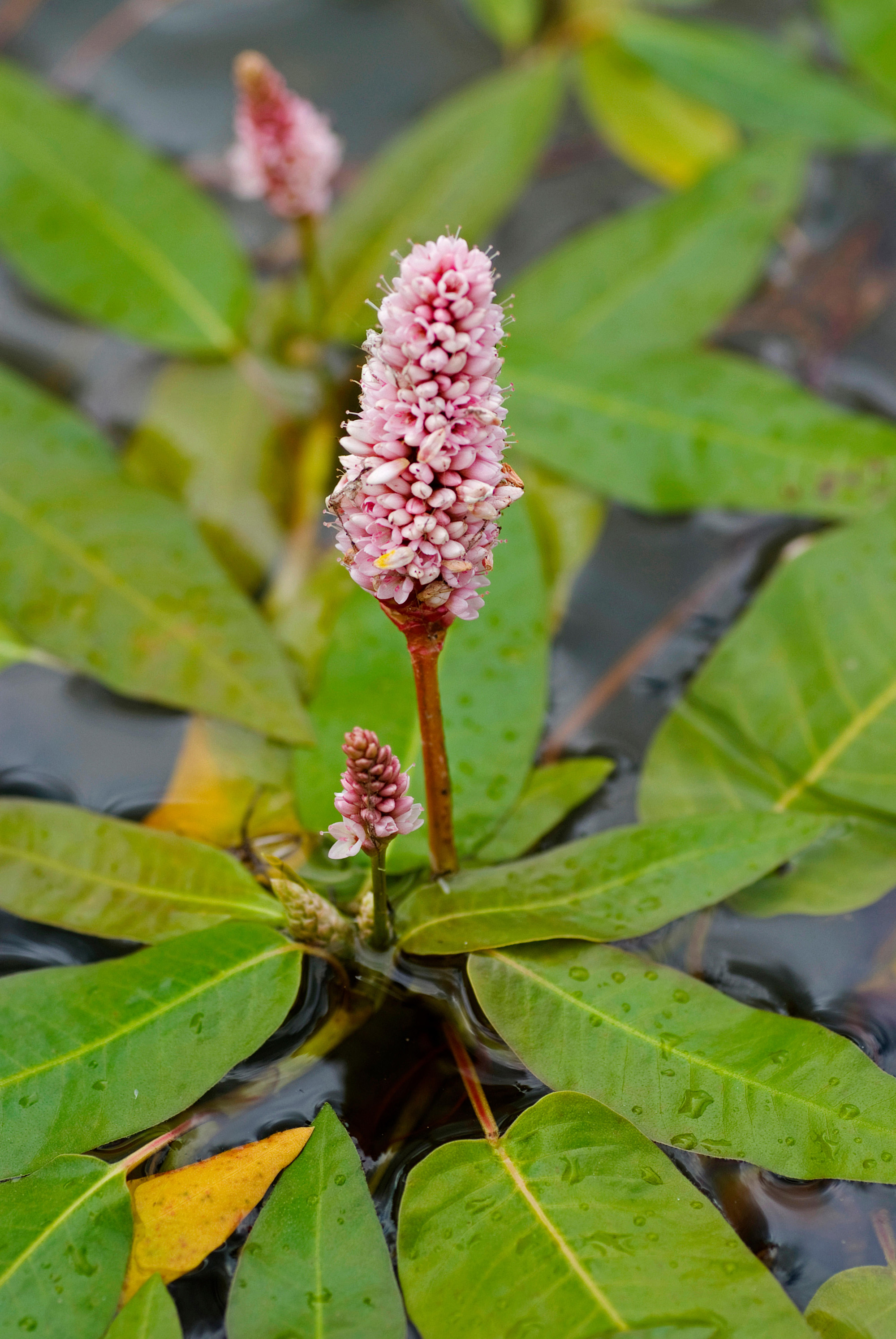
This best pond plant is a marginal. It has dark green floating leaves with upright pink bottle brush shaped flowers on sturdy stems up to 30cm tall, from midsummer to autumn. Once established, it grows fast and strong, and will thrive in water depths up to 80cm.
10. Scarlet Monkey Flower
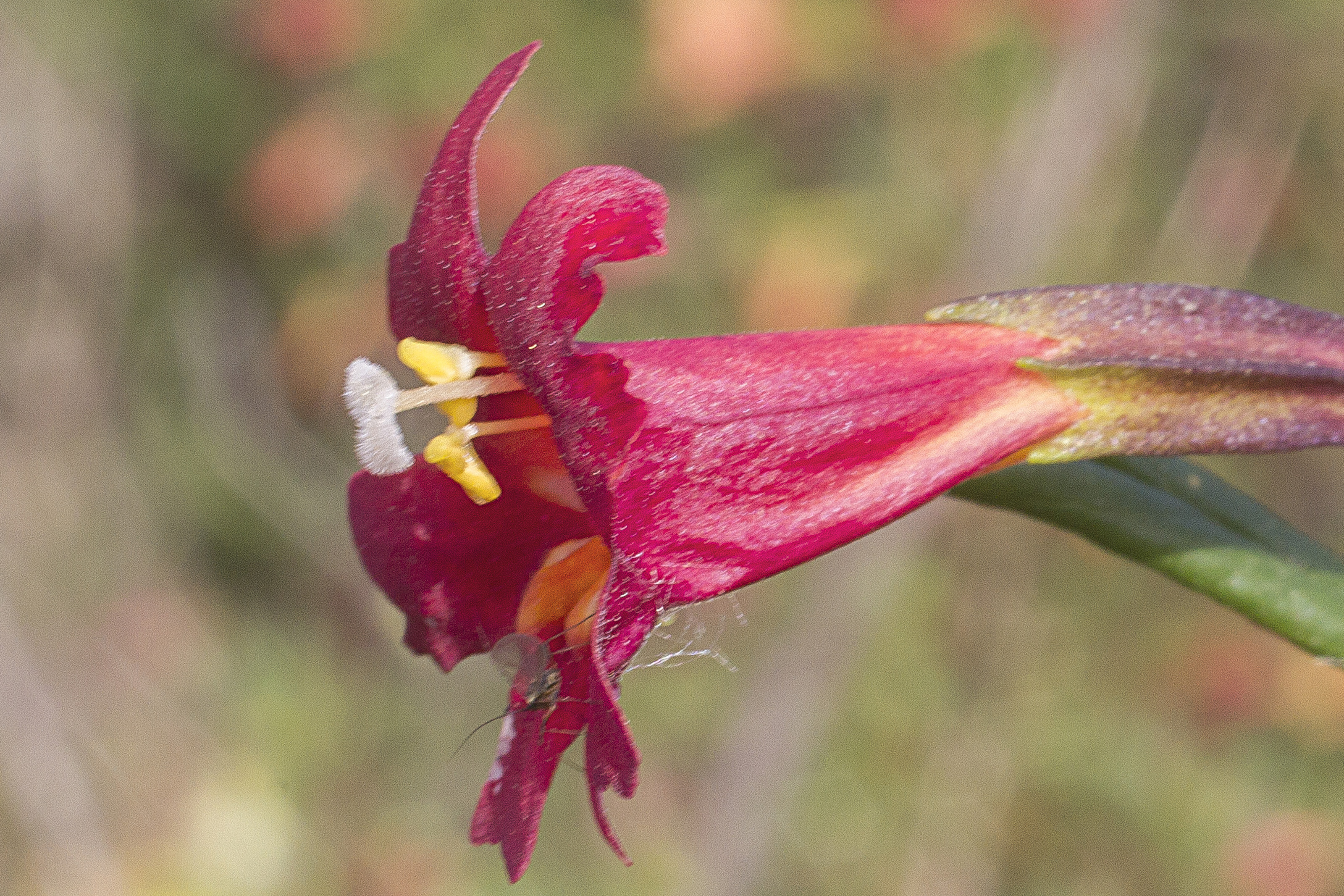
Add a splash of rich color with this spreading marginal plant. It has masses of tubular, tomato red flowers from summer to early autumn. It prefers a sunny spot, and it is an easy one to grow. If it gets too large, trim back in the growing season. Remove the seed heads to encourage more flowers.
When should you plant pond plants?
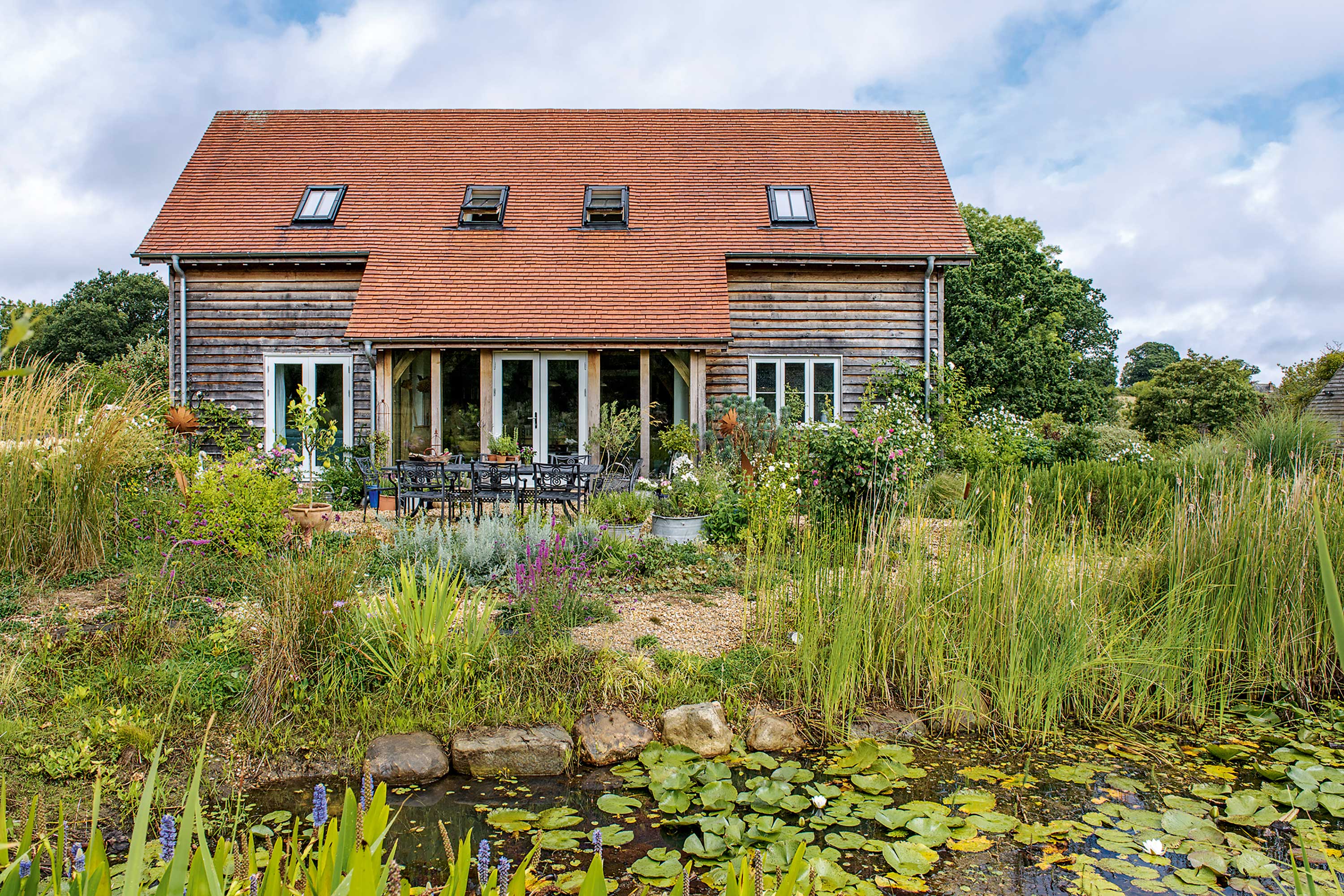
According to the RHS, the ideal to plant your best pond plants is from mid-spring to early summer, when the water is warming up and plants are more likely to establish well.
How to plant pond plants

- In small ponds, the best plants for ponds should ideally be grown in containers to stop them from growing too large and taking over the space. These containers are often called aquatic baskets. They have open lattice work sides which allows water, air, and other gases to flow freely.
- Line the containers with a porous fabric, such as hessian, and use a medium to heavy loam compost. The RHS advises that garden soil can be used, so long as it is free from fertilizers and herbicides. Specialist aquatic compost is available from garden centers.
- Add a few heavy pebbles to stop the containers from floating, and part fill with compost.
- Plants should be sunk to the depth of their original container, unless they are rhizomes, in which case they should peek just over the surface of the soil. Firm in well.
- Some oxygenating plants can simply be dropped into the water.
How many oxygenating plants do I need for my pond?
In a new pond, a good guide is to aim for adding three bunches of oxygenating plants per square metre.
What are the best pond plants for a small pond?
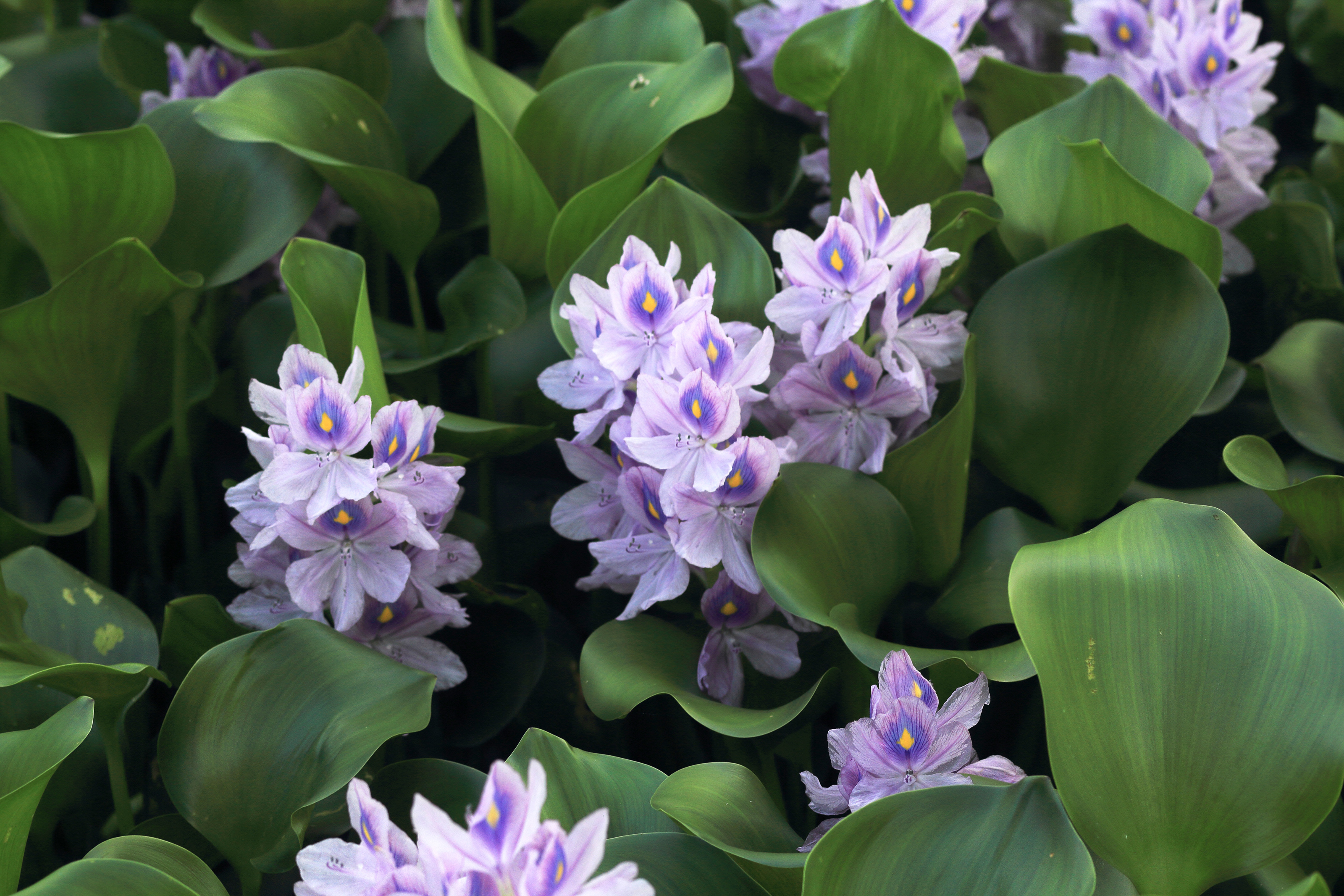
Water hyacinth are floating plants and ideally suited to smaller garden ponds
Some pond plants do grow to a large size, so choose carefully if you only have a small area of water to suit your small garden ideas.
Try dwarf water lilies and water hyacinths, which are both floating plants. Corkscrew rush is an attractive grassy marginal which will not get out of hand, and creeping jenny will soften edges with a mat of foliage, but won’t exceed 7cm in height.
For a submerged option for a smaller pond, try anacharis, which is essentially one long stem with feathery foliage.
What sort of wildlife will my pond attract?
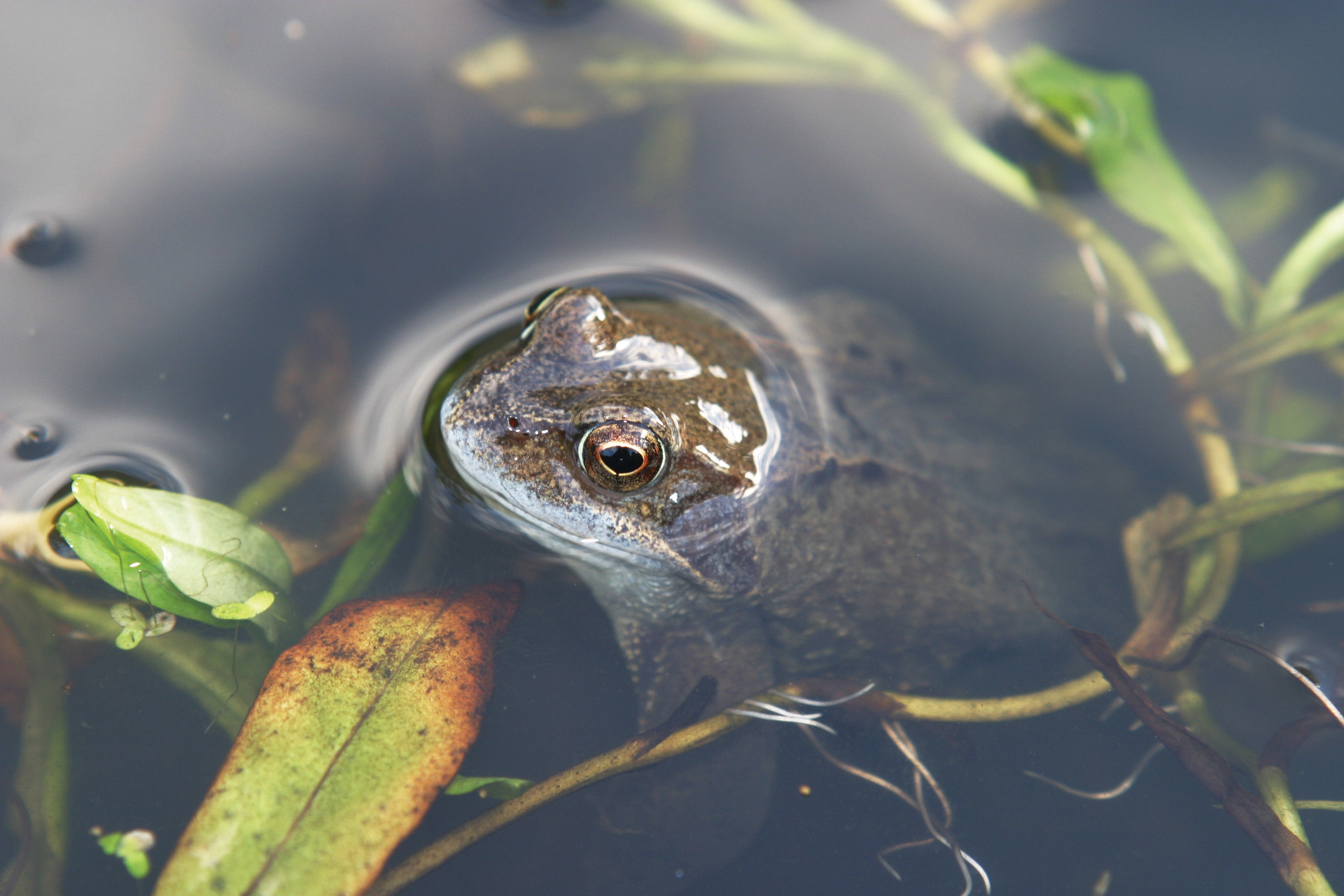
According to Dan Reep of Squires: 'Ponds attract wildlife into your garden very quickly, and provide great habitats for wildlife such as fish, amphibians and invertebrates. Submerged plants produce oxygen and provide shade for aquatic life such as newts and frogs.' Birds will also visit to drink and bathe throughout the year.
There's more advice on how to encourage creatures into your garden in our wildlife garden ideas feature.

An experienced freelance journalist, editor and columnist writing for national magazines and websites, Fiona now specialises in gardens. She enjoys finding and writing about all kinds, from the tiniest town plots to impressively designed ones in grand country houses.
